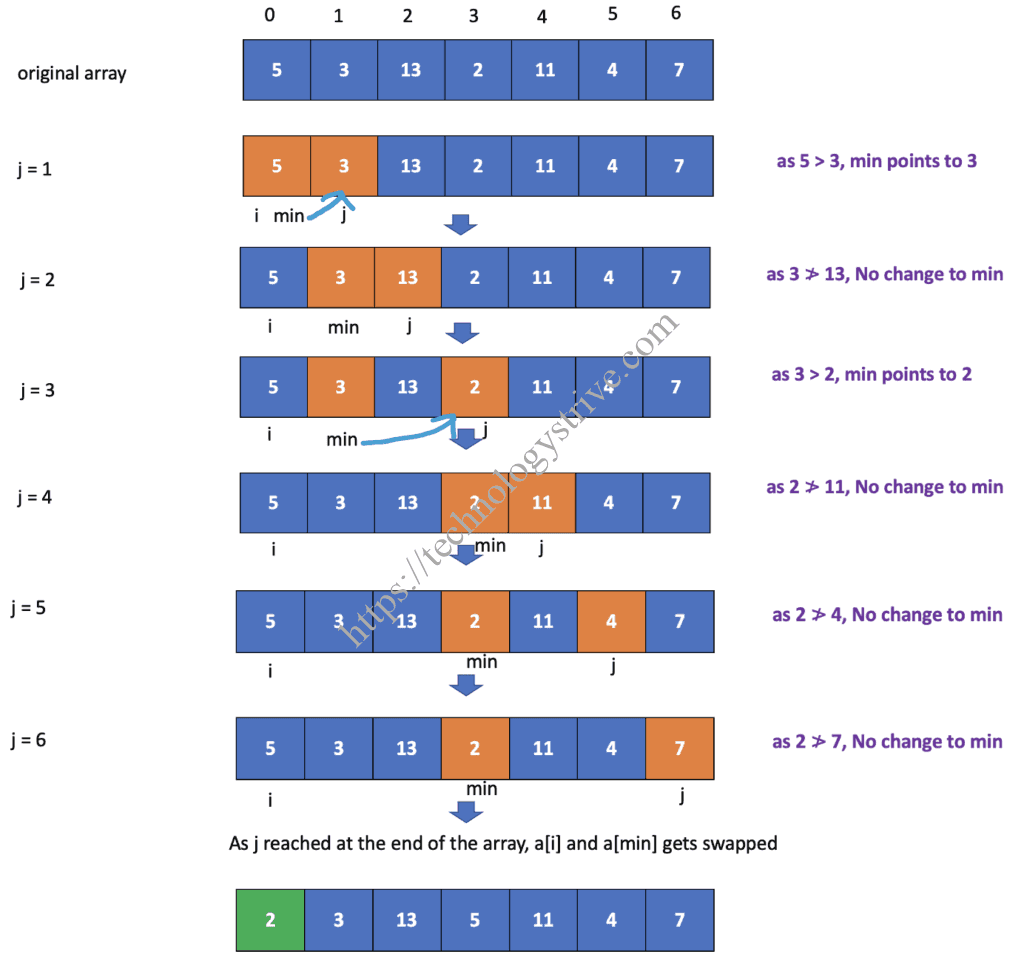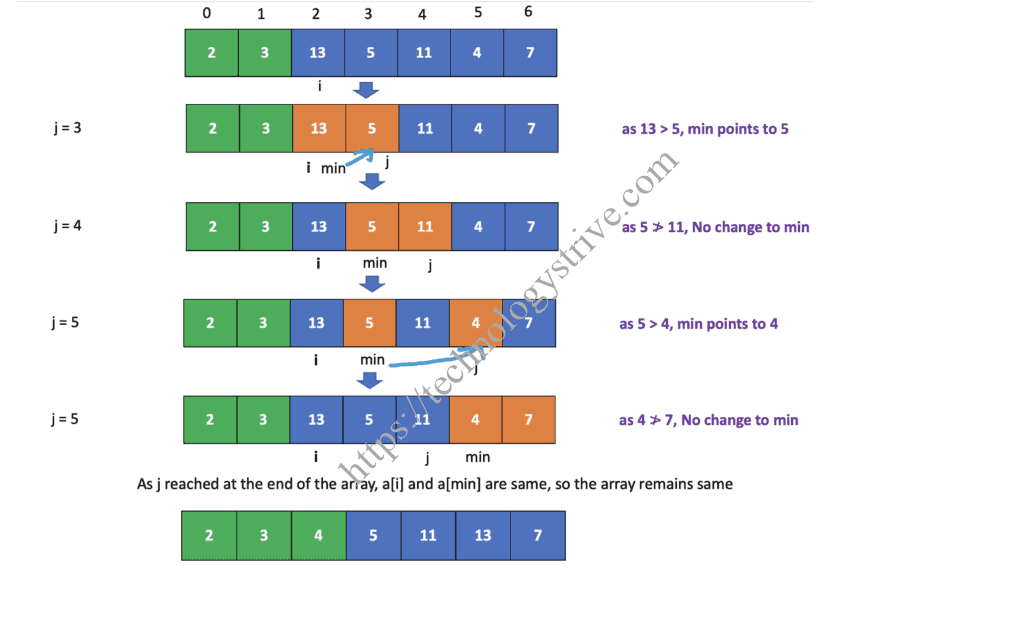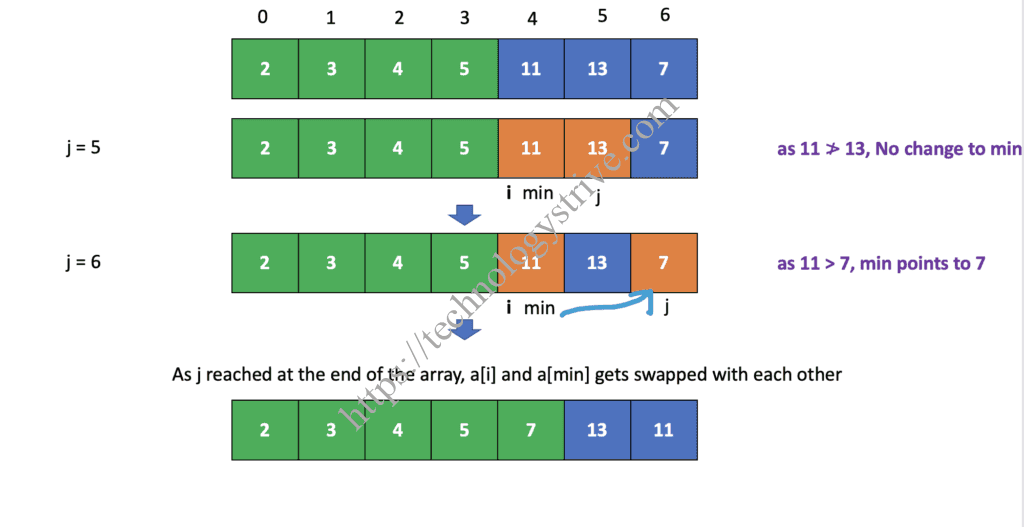
Selection Sort Algorithm
Introduction
Selection Sort Algorithm works by finding the minimum element of the array and placing the min element at its correct position. In the selection sort, the first element is selected as minimum and visits other elements of the array, If any element is found lesser than the current minimum, the minimum value gets updated. This process gets repeated for other elements of the array.
Algorithm
1Step 0 : Initialize n to length of the array23Step 1 : Initialize j to 0 and compare a[j] with a[j+1]4 (compare adjacent elements starting from 0th index)56Step 2 : if a[j] > a[j+1] swap a[j] and a[j+1]78Step 3 : repeat steps 1 and 2 until j reached end of the array9 (by end of this one element will be placed at its correct order)1011Step 4 : continue from Step 1 n-1 times12 (so that all elements will be in proper order)
Example Explanation
1Input array : a = {5, 3, 13, 2, 11, 4, 7}
Iteration 1 : (i = 0)
Step 1 : Initialize i = 0
Step 2: Initialize min to i and j = i+1 So min = 0 and j = 1.
Step 3: Compare a[min] with a[j] & change min index if a[min] > a[j]
Step 4: Increment j & repeat from Step 3 until j reaches end of the array.
Iteration 2 : (i = 1)
Iteration 3 : (i = 2)
Iteration 4 : (i = 3)
Iteration 5 : (i = 4)
Iteration 6 : (i = 5)
Implementation
1public class SelectionSort {23 // Method to sort a given array4 public void sort(int[] array) {5 int n = array.length;6 for(int i=0;i<n-1;i++){7 // Let us assume a[i] is the smallest element of unsorted array8 // initialize min index with i9 int min = i;1011 for(int j=i+1;j<n;j++){12 // compare a[min] with a[j] and change min index accordingly13 if(array[min] > array[j]){14 // as array[min] is greater that current element, update min index with j15 min = j ;16 }17 }18 // at the end of the iteration we know what is min of the unsorted array19 // swap elements at min and i20 // it means element at i is part of sorted array21 // continue same process for remaining un sorted array22 swap(array, i, min);23 // if you want to see the array at the end of every iteration, uncomment below lines24 // System.out.println("Iteration "+i);25 // print(array);26 }27 }2829 // method swap values at index i and j of array30 private void swap(int[] array, int i, int j){31 int temp = array[i];32 array[i] = array[j];33 array[j] = temp;34 }3536 // Helper method to print an array37 private void print(int[] array) {38 for(int i=0; i<array.length; i++) {39 System.out.print(array[i]+"\t");40 }41 System.out.println();42 }4344 // Driver Code45 public static void main(String[] args){46 int[] a = {5, 3, 13, 2, 11, 4, 7};47 SelectionSort obj = new SelectionSort();48 obj.print(a);49 obj.sort(a);50 obj.print(a);51 }52}
Complexity Analysis
- Time Complexity : O(n^2).
- Space Complexity : O(1) .





